by Gillian N. Osborne, photos by Ryan Molnar // Nov. 22, 2022
Charlotte Dualé’s studio is hiding in plain sight. The former clubhouse of a garden community in eastern Berlin still announces itself as a Gaststätte, with community notices, a space to share seeds for the coming spring and a host of children’s toys outside. There’s a strange sense of placelessness in this warren of narrow, grassy paths that twist and turn and seem to lead nowhere, with barely another human to be seen. You wouldn’t know you were in the city at all if it wasn’t for the occasional train passing on the elevated track just a hundred meters away.
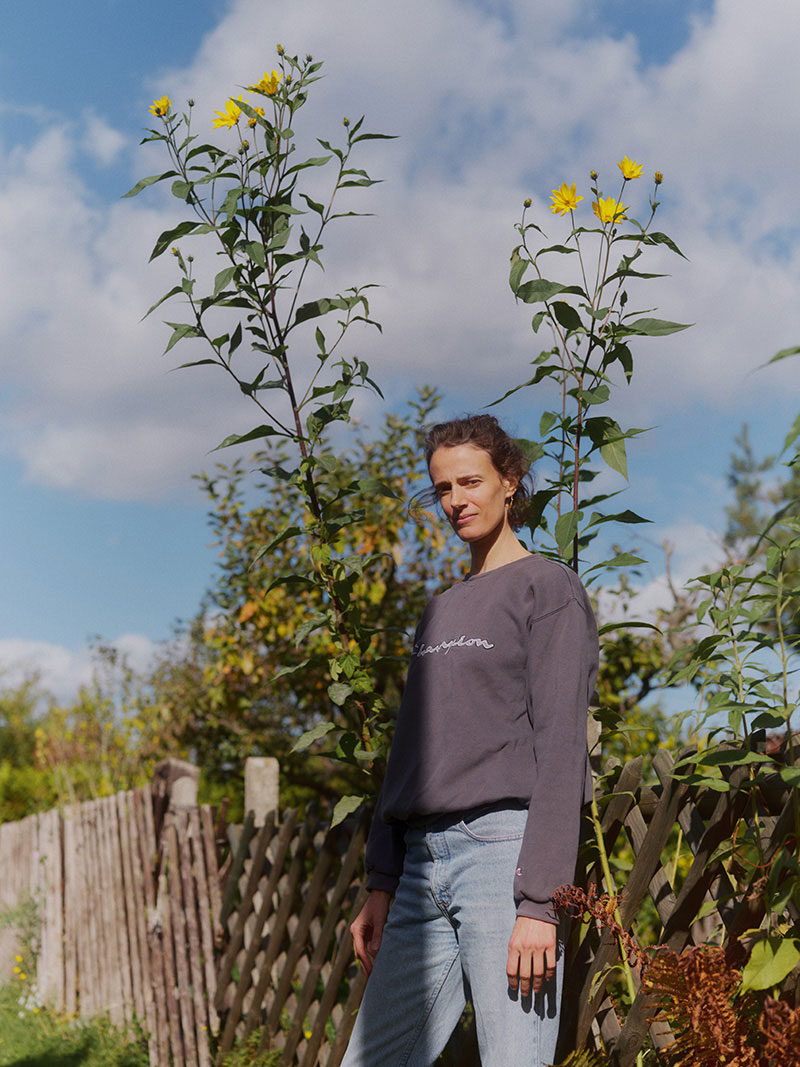
Dualé welcomes us into the bar of the clubhouse, which is still used by the community from time to time. It took her a year to convince the resident gardeners that an artist’s studio would be a good use of the defunct space. Before she moved in, it had been standing empty for five years. The studio is connected to the bar through a huge pair of sliding doors. It’s brightly lit, and, in contrast to the cosy, wood-panelled saloon, white, open, and spacious. Shelves cover almost every wall, buckling under the weight of what must be hundreds of pots of glaze, while small technical tools hang from hooks in the ceiling beams. A huge central table holds Dualé’s latest work for Art Cologne.
The artist’s most recent focus has been on magic shows, specifically a trick that was performed on television in the 80s and 90s where a woman, usually the (male) magician’s assistant, is closed into a box and then appears to be cut in half, or sometimes into three pieces. “As a child I was terrorised by these tricks,” Dualé laughs. “I thought, ‘that poor girl, standing there in her bikini!’” The fragmented body has long been a focus of Dualé’s work, but here the fragmentation is clearly gendered, as if the magician was the ultimate master of space, literally cutting his smiling, cooperative assistant down to size. “It’s crazy when you think about the message being sent out,” she adds.
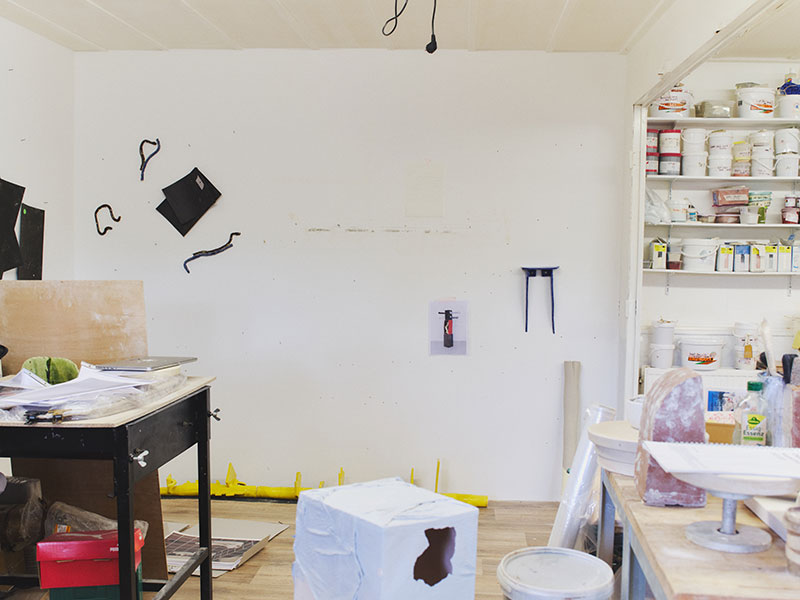
In these latest works, ceramic forms⎯evoking tubes, bones, and not quite identifiable limbs⎯are bent and squashed into larger ceramic boxes, exerting visible pressure on the boxes themselves. Or they extend outwards, whole, through holes in the box walls, evoking skeletal arms or legs. In Dualé’s words, they’ve been “through different types of torture.” Finally, the boxes are stacked, one on top of the other, to create one “body,” a totem-pole of sorts. Around them, other tubular structures lean against the walls, as if waiting for their turn to participate.
The individual boxes speak to how the magic trick was actually performed on television, namely by two women⎯one whose feet extended out of the lower box and another whose head is visible from the top. This means that the women had to squeeze themselves into boxes that appeared big enough for only half a person. In another version of the trick, the assistant was a master of contortion and could bend herself at such stark angles that she appeared to be split between three boxes.
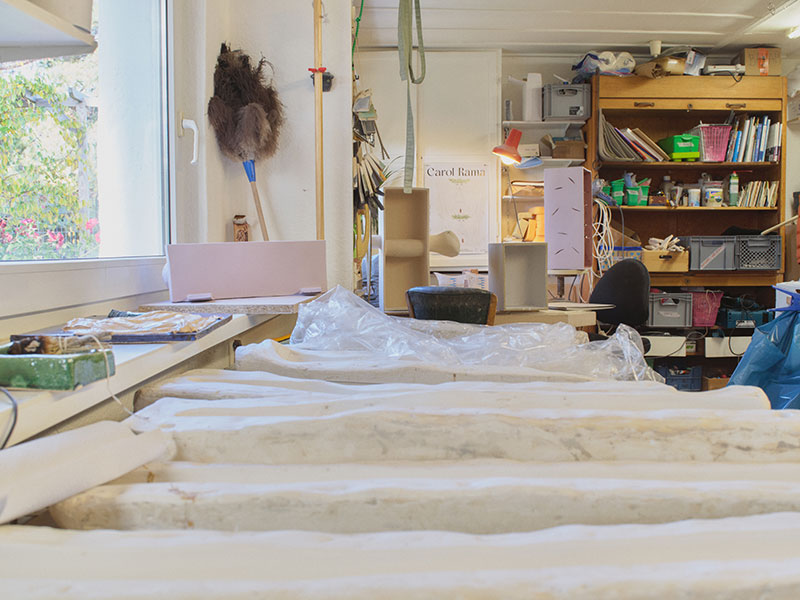
Showing us a print from a very early installation, in which a fragment of a racehorse fills the frame — the leg appears spindly and fragile, supporting a hulk of bulging shoulder muscle, sweat oozing out of invisible pores and sliding across a layer of chestnut hair — Dualé explains that she was drawn to the “fragile bones, but also the strength and ambiguity.” This ambiguity runs through her work still today. It takes on a sculptural materiality in the porcelain tubes that have become a refrain in Dualé’s oeuvre. The forms, Dualé tells us, are “a metaphor for the body, for fragmented bodies, in situations of pressure or performative situations, situations of everyday life.” Initially Dualé left the tubes in their natural white colour, making the bone analogy more direct and literal, with the material lending itself perfectly to a juxtaposition of the softness of organic tissue and the hardness of a skeletal structure. Soon she began to experiment with colour, settling on the bright blues and reds for which she is known today⎯an intentional and direct contrast, she explains, to the bodily aspect of the forms themselves.
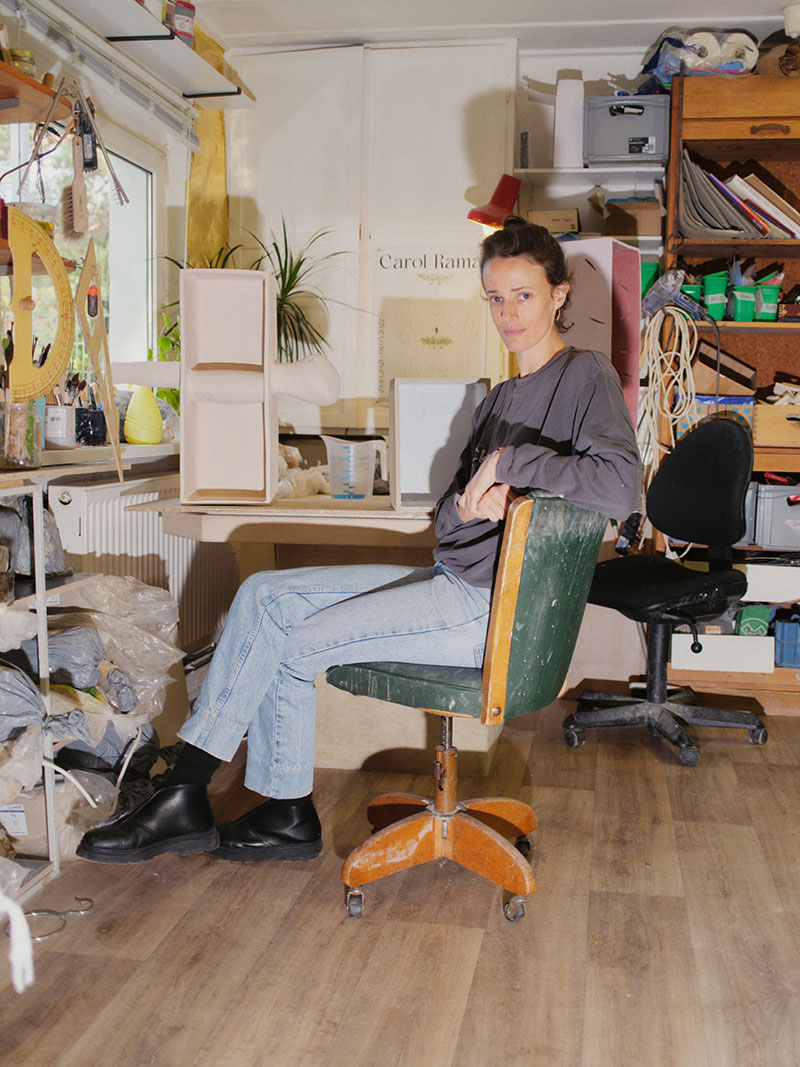
In earlier works, these tubular forms leant against walls, hung on metal rods, or collapsed onto themselves in piles of indistinct bodily material, perhaps skin or bone, their glazes appearing wet and alive. “My early sculptures really made themselves,” Dualé says. “I worked with gravity, letting them fall and crack onto each other.” The moulds for the forms take up one large table in the studio. They require frequent repair, explains Dualé, as the brittle plaster from which they are made crumbles and breaks during use. It’s surprising that such a variety of sculptural shapes come from only three or four moulds, but Dualé explains that the liquid clay she uses lends itself to manipulation and sculpting long after being removed from its cast. She’s been using this set of moulds for a long time now, long enough that the shapes function as a sort of language in her output. There’s a certain irony in the fact that the moulds were originally created from a material meant to bestow smooth plastic perfection on a woman’s body, in this case nylon tights filled with plaster, but the end result is unevenly organic. The unruly plaster makes the stocking heave and bulge, producing a seemingly pliable, lumpy form — the sculptural version of the cellulite that stockings are designed to conceal.
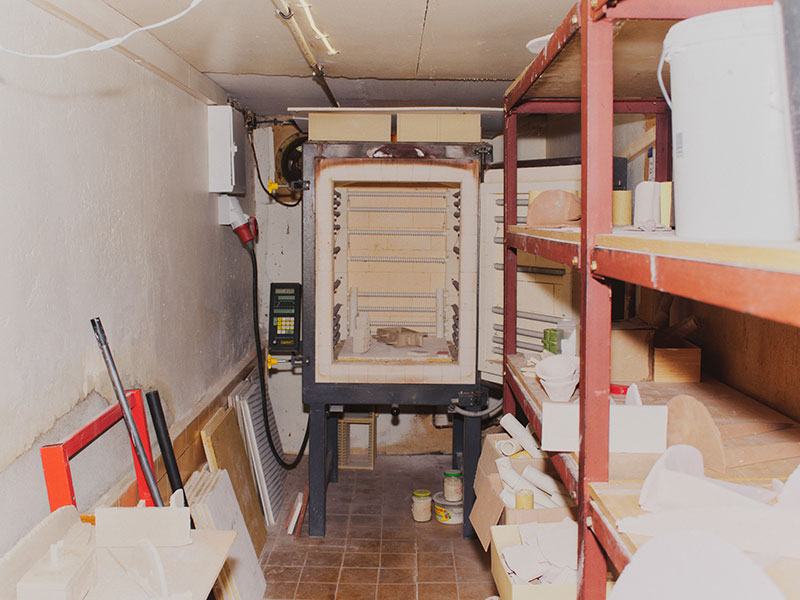
Dualé discovered clay at the Weissensee Kunsthochschule Berlin, where she spent most of her time in the ceramics workshop. Nevertheless, she is mostly self-taught, and chooses to keep her knowledge limited to avoid the danger of getting lost in technical details and neglecting, or perhaps forgetting, the form itself. “I like this idea of not becoming too much of a technician,” she tells us, “not becoming too nerdy in one thing and then losing the bigger picture. I want to keep it simple, not become a slave to the material, the technique.” And yet the materiality of her medium is nevertheless important⎯it’s as if Dualé keeps herself in a kind of suspended ignorance. She concedes: “I do really like the materiality. It’s not just brain, it’s something physical.”
One of my favourite strands of Dualé’s work is her ‘TXT’ series, which is ongoing alongside her larger sculptures. Initially conceived as a way of expressing something that refused form in language, namely grief, Dualé began to explore ideas put forth by the cyberfeminist movement in the 1980s: how to create a new language outside of the existing possibilities. In this case, Dualé notes, it is “a language that isn’t communicating a message,” because the ceramic “letters” that make up the series are non-codified, undecipherable. Instead, “the message is in the medium itself. It’s a dysfunctional language … Creating your own language is like creating your own world, establishing your own way of expressing yourself with a revolutionary element coming from the fact that to define a new language is to reject the one that exists.”
Dualé explains that the pieces making up ‘TXT’ are closer to the practice of drawing than sculpture. Indeed the rune-like pieces, in their mysterious aliveness, seem to march across the wall in unending sentences. In some cases they spiral down towards the floor, taking hold of the space to say something that will never be explicitly understood, but is expressed nonetheless. The letters, each one unique, interact in a choreographed movement where each speaks to the next while refusing to conform to the limited structure of an alphabet. It is, as the artist notes, a “language where there is room for interruption and stuttering, where pause, interruption, dizziness, echo or repetition have a place.”
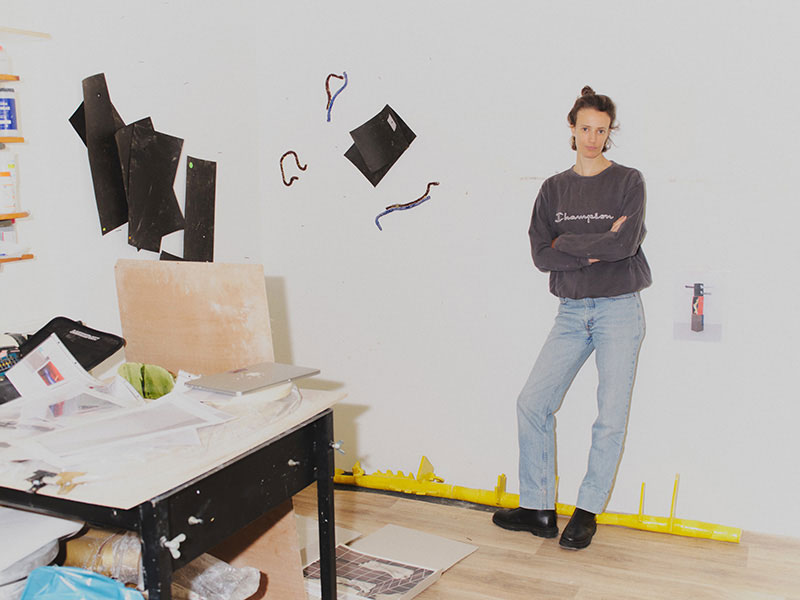
The ‘TXT’ series was created using off-cuts of clay gathered through the artist’s daily routine of tidying, ordering and re-using materials. The near ritualistic process of forming, drying, glazing, and cleaning means that her works are constantly at different stages of production. Rather than finishing one work and starting the next, Dualé is always intervening in the processes of several pieces — sometimes picking up where she left off and at other times moving a project forward while another is paused. There’s also a sense in which she is intervening in the process of the studio itself. As she explains how colour is sprayed on to the pieces, showing us the heavy-duty equipment (and protection) used for the application of glaze, it becomes increasingly clear just how much time is spent cleaning off excess glaze before firing. Not to mention the time spent cleaning the equipment, and then the studio itself⎯to the point that cleaning has become an integral part of Dualé’s practice. Through this routine the studio becomes a sort of organism, one that requires constant care in order for the works to emerge. “You know,” she says thoughtfully, “when you think about these sculptures, 90% of the work is cleaning. But it’s important. Without the cleaning, the sculpture wouldn’t be there. And I think it also fosters a kind of humility. It’s the opposite of being a conceptual artist, the genius who has a lightbulb idea. No, for me, it’s like, you clean, you clean, you clean, and then you have a sculpture.”
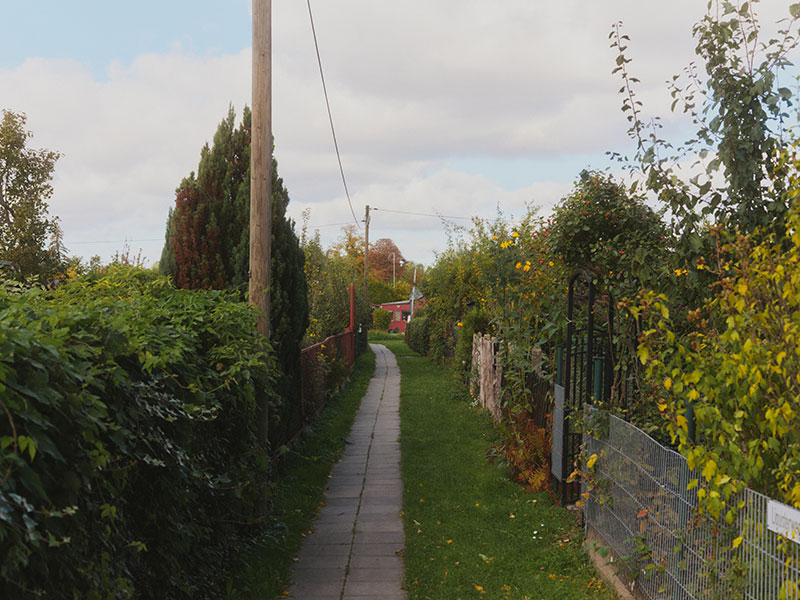
As we leave Dualé’s studio I however do receive something of a lightbulb moment. Re-entering the stillness of the warren-like gardens, the apparent incongruence of the surroundings suddenly makes sense. It becomes clear that what connects Dualé’s practice to this particular space, to this community, is their mutual engagement with earth. Dualé is working quite literally with the clay beneath our feet, but she is finding difference answers in its plastic potential.

























